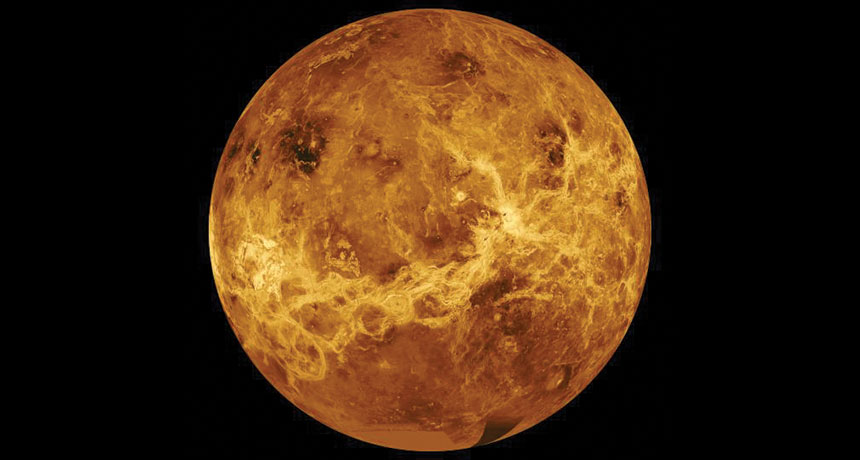Asteroid impacts may explain Venus’ missing oxygen
Pulverized rock dust could have absorbed remnants of planet’s lost water, simulations suggest

THE PLANET NEXT DOOR Ancient asteroid impacts may be responsible for the lack of oxygen in the atmosphere of Venus, whose surface is shown here in this false-color map from the Magellan spacecraft.
JPL-Caltech/NASA







